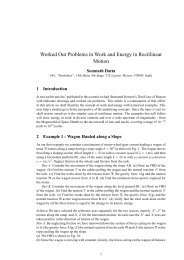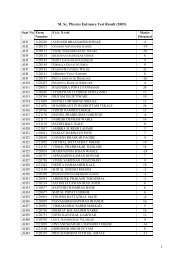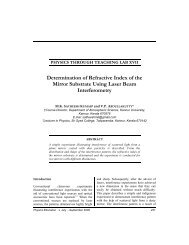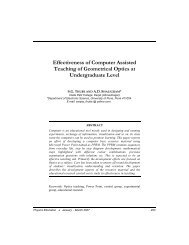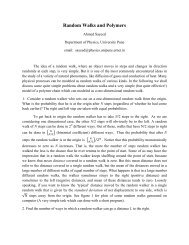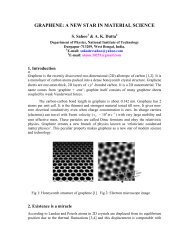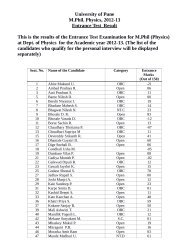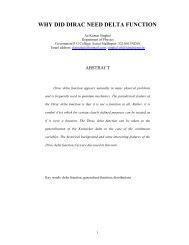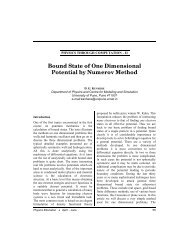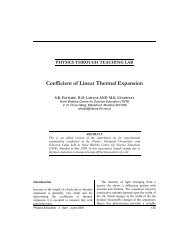Newton's Third Law of Motion
Newton's Third Law of Motion
Newton's Third Law of Motion
You also want an ePaper? Increase the reach of your titles
YUMPU automatically turns print PDFs into web optimized ePapers that Google loves.
4. If so, why is he slipping? No runner is his<br />
able to run on a slippery track in spite <strong>of</strong> his<br />
muscle power. The force that drives the runner<br />
forward comes from the ground when there is<br />
sufficient friction between his feet and the<br />
ground.<br />
5. This car requires 40,000 N to speed up at the<br />
rate <strong>of</strong> 10m/s 2 . This sprinter requires 300 N to<br />
speed up at the rate <strong>of</strong> 5m/s 2 . How is the road<br />
able to judge the individual force requirements<br />
for the car and the sprinter?<br />
6. Answer to this comes from Newton’s <strong>Third</strong><br />
<strong>Law</strong> <strong>of</strong> <strong>Motion</strong>:<br />
• Nothing in the universe can act without<br />
being acted upon.<br />
• To every action there is an equal and<br />
opposite reaction.<br />
The first statement is somewhat<br />
philosophical. The second one is vague. In<br />
exact terms what the first statement means is<br />
that whenever any object A <strong>of</strong>fers a force F, it<br />
itself experiences the same force back on itself<br />
in the reverse direction.<br />
214 Physics Education • July − September 2009




